|
With all the work getting Rotator finished, I've been slacking off a bit on the tutorials. It also means I have a backlog of cool stuff I've been thinking about so we will start up again talking about the multi-oscillator in Thor. Now, the REAL Multi Oscillator tutorial is here on the Propellerheads web site in the "Discovering Reason" series. I'm not going to go into too much detail , and I am going to put my own spin on it to (hopefully) make this relevant to those of us with a wind controller. By the end of the tutorial, we will have created a classic 'blown pipe' EWI sound, but using nothing but the Multi Oscillator in Thor. A natural type sound, created via synthesis only! 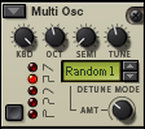 Simply put, each Multi Osc is 8 detuned oscillators playing simultaneously. This gives us rich chorused sound. If you had all 3 Thor oscillator slots filled with the Mult Osc that would add up to 24 oscillators! You would need 12 Subtractors or Malstroms to equal this. Let's run down the controls:
Here is the Sawtooth waveform played with with the Random 1 detune mode. I'm going to set LFO 1 to control the Amt so you can hear it gradually move from minimum to maximum detune. You can try this little trick with the other waveforms and the other detune modes. As you can hear, you can have everything from a mildly detuned, chorused sound, to crazy atonal noise. For our EWI sound design purposes, you will probably want to keep the detune amount somewhere in the 24-44 range, at least when using the Random 1 and Random 2 detune modes. Just use your ear and listen for what sounds good to you. Building the PatchNow that we know what a multi oscillator is, we can start building our patch. Now, we could just build a detuned sawtooth wave patch, which would be pretty run of the mill. But do we ever do things the easy way, here? No way! Let's do something a little more challenging and create a different kind of patch - a blown pipe patch. The challenge for this patch is to get the right amount of tone and breathiness, since we are emulating blowing over a long pipe, like a piece of bamboo or a bottle. That reminds me - time to take break and find a bottle - or empty one myself! mmm, good. The heart of our tone should be something pure, similar to a triangle or sine wave, with not too many harmonics. For the breathiness, though, I stumbled onto something really cool. This is one of those 'happy accidents' that I ran into one day just playing around with the multi-oscillator. I noticed that the square wave, with a medium to medium strong amount of detune using Random 1 or 2 detune modes had an 'airy' or 'hollow' quality to it. Perhaps this could be used to add air or space to an existing patch? Why does it sound like this? It probably has something to do with the randomness of the detuning turning into noise at a certain point. We can mix in this 'airiness' with another oscillator to provide some life to a sound. It certainly sounds like detuned square waves, but there is a swirling, noisy sound in the high frequencies. There is a certain tonal, not quite vocal, quality to it that is different than the noise oscillator, and I rather like it. Since this is going to be a mellow, pipe sounding patch, I added another multi oscillator, set the waveform to the 4th one down (the one that looks like a camel's hump) and left the detune amount at the default, 24. I then set a moderate attack and release in the Amp Env section. A= 17.4 ms D= 4.35 sec S=-4.5 db R=159 ms You will note I have no filters and both oscillators routed through the empty filter 1 slot so as to get to the Amp section. The trick to making this patch sound good is setting the balance between the two oscillators with the 'Balance 1-2' knob in the Mixer. I found that using the detuned square subtly, underneath the main sound actually brought out the airiness better. I found balance values between 100-120 sounded best. Experiment to see what suits you. Here is what it sounds like now: The next step would be to turn on the Chorus and Delay:  I haven't added any breath control, so to do that I'll keep things simple and set the volume to be controlled with Breath, and nothing else: This routing just says "let Breath data control 100% of the Amp Gain." There is just one more thing to make this patch extra special. We'll add some diaphragm vibrato that kicks in after about half a second or so. With diaphragm vibrato, like a flute player would use, the strength, or volume of the note changes, not the pitch. To accomplish this we will use LFO 1. LFO stands for Low Frequency Oscillator, but thats just a fancy way of saying 'modulate a parameter with this repeating pattern.' In the MBRS I set Source to LFO1, Amount to 56 and Dest to Amp Gain. In the LFO 1 section, I'll keep the waveform a sine wave (the default). There are 3 parameters we can adjust here.
Here are the values I am going to use for our diaphragm vibrato:
Here I have set LFO1 to control 61% of the Amp Gain. You might want to control when the vibrato kicks in or how much to apply. This is where the scale parameter comes in. If LFO1 modulates the Amp Gain, the Scale parameter lets you modulate the 'Amount' column. In other words, the scale parameters lets you modulate the modulation amount. Let's assign Mod Wheel to the LFO1 Source, with a Scale amount of 100. This means that with the mod wheel at 0, there will be no modulation (it makes the 61 in the first Amount column 0). When the mod wheel is at full throw (it's max amount) the first Amount column is now 61, our max. Any values in between will scale the amount appropriately. So there you go, a nice breath controlled patch that you can be proud to play in a variety of situations, and we didn't even touch a filter! There are no hard and fast rules, so feel free to add another oscillator or switch the waveforms around or even add some filters. Here is the completed patch and a little sample of me playing it. Have fun and make great music!
This little excerpt consists of me playing the electric flute patch we just made, a Dr Rex loop from the Reason Factory Sound Bank (Kahon_01a_100) and the patch 'String Orch (BC)' from Rotator. The strings were played in one pass with the EWI.
0 Comments
Leave a Reply. |
Reason ReFills
Rotator Volume 1 and Rotator Volume 2 Released!
Categories
All
Archives
March 2021
|
||||||

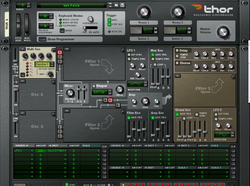
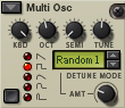
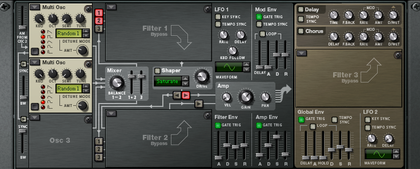

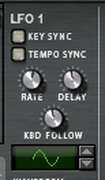


 RSS Feed
RSS Feed